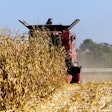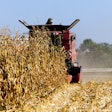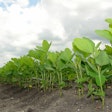
The latest U.S. Drought Monitor report, jointly produced by the National Drought Mitigation Center at the University of Nebraska-Lincoln, the United States Department of Agriculture, and the National Oceanic and Atmospheric Administration, reveals a concerning trend of expanding drought conditions across much of the United States, with significant implications for the agricultural sector.
The Southwest and southern Plains have been hit particularly hard, experiencing extensive degradation due to prolonged periods without precipitation. This has resulted in alarmingly low streamflows and high fire danger from southern California into southern New Mexico. The situation is further exacerbated by abnormally low snowpack in many mountainous regions of the Southwest, Utah, and Colorado, leading to widespread degradation in these areas.
In contrast, some regions have seen minor improvements. A band of beneficial precipitation from Texas to West Virginia and northeastern Kansas into northwestern Illinois has brought some relief to farmers in these areas. The northern intermountain West also experienced isolated precipitation and decent snow water equivalent, leading to slight improvements in drought conditions.
However, the overall picture remains challenging for many agricultural producers. The Midwest, a crucial region for crop production, saw warmer-than-normal temperatures and limited precipitation. This led to the expansion of abnormally dry conditions and moderate drought in several states, including Iowa, Minnesota, and Wisconsin. Farmers in these areas may face difficulties with soil moisture levels as the planting season approaches.
The Southeast experienced a mix of improvements and degradations. While some areas benefited from recent heavy precipitation, others continue to struggle with dry conditions due to a prolonged lack of rainfall and warmer-than-normal temperatures. This variability poses challenges for agricultural planning and water management in the region.
In the West, severe and extreme drought conditions expanded in southern California, southern Nevada, Utah, and Arizona. Exceptional drought was even introduced in southern Nevada along the northwestern Arizona border. These conditions are raising concerns about water availability for irrigation and increasing the risk of wildfires, which could potentially impact agricultural operations.
As the growing season approaches, farmers and ranchers across the country will need to closely monitor these evolving drought conditions and adjust their plans accordingly. Water conservation measures and drought-resistant crop varieties may become increasingly important in affected regions.
















